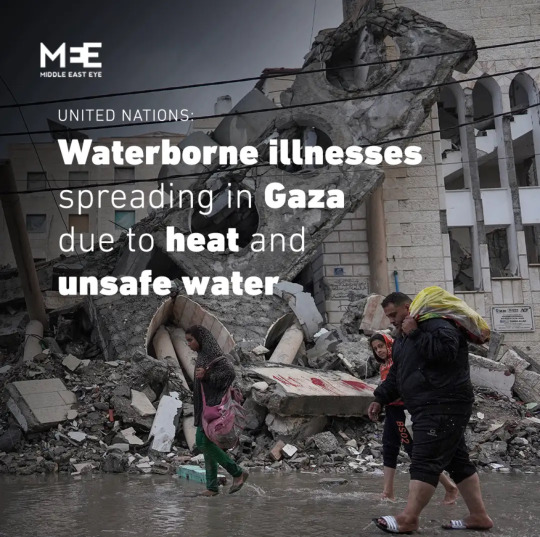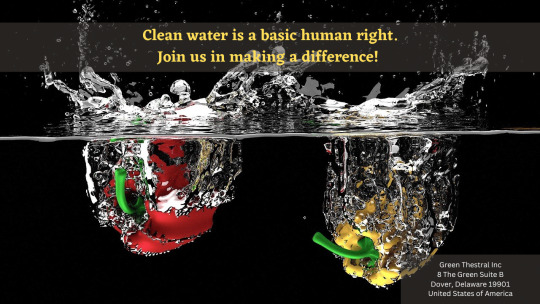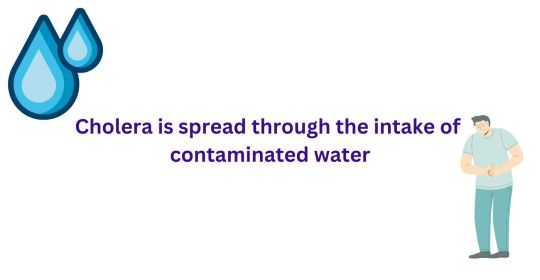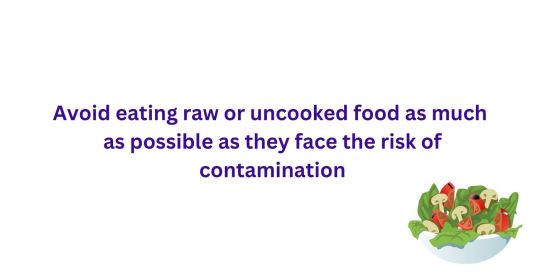#Waterborne diseases
Text
Residential Drinking Water Treatment Equipment Market Size, Competitive Landscape and Trend Analysis 2024-2028
The Residential Drinking Water Treatment Equipment Market is anticipated to expand by USD 5.91 billion at a 7.46% CAGR from 2023 to 2028, fueled by increasing worries about waterborne illnesses and deteriorating water quality. This growth is also driven by the proliferation of online retail, digital marketing, and the rising demand for sophisticated smart systems, though rural regions still encounter obstacles due to limited awareness.
#Residential Water Treatment#Drinking Water Equipment#Market Growth#Waterborne Diseases#Smart Water Systems#Online Retail#Technological Advancements
0 notes
Text
The lack of clean water combined with rising temperatures is increasing the spread of waterborne diseases in the Gaza Strip, the UN has warned.
"It is becoming very hot there," Jamie McGoldrick, United Nations humanitarian coordinator in Gaza, told reporters via video link from Jerusalem.
"People are getting much less water than they need, and as a result, there have been waterborne diseases due to lack of safe and clean water and the disruption of the sanitation systems."
"We have to find a way in the months ahead of how we can have a better supply of water into the areas where people are currently crowded at the moment."

0 notes
Link
1 note
·
View note
Text
#lifestyle#Waterborne diseases#Treatment of Cholera#Dehydration#kauvery hospital#healthcare#healthcare blog#healthy food#healthy
0 notes
Text
বর্ষা মানেই জলবাহিত রোগের আশঙ্কা, আপনি সতর্ক তো?
Monsoon Health:বর্ষা মানেই জলবাহিত রোগের আশঙ্কা, আপনি সতর্ক তো?
Source link
View On WordPress
0 notes
Text
0 notes
Text
Water Tank Services
Tank Inspection: Regular inspections are crucial to identify any issues or damage in water tanks services . Professionals assess the tank's structural integrity, check for leaks, evaluate the condition of fittings and valves, and recommend necessary repairs or maintenance.Tank Cleaning: Water tanks accumulate sediment, debris, and microbial growth over time. Professional tank cleaning services involve the removal of sludge, disinfection, and sanitization to ensure the water remains safe and clean.
#Water tank cleaning#Tank maintenance#Tank sanitation#Sediment removal#Algae control#Bacterial growth prevention#Tank disinfection#Water quality improvement#Sludge removal#Tank inspection#Filtration system#Chlorination process#Waterborne diseases#Tank hygiene#Reservoir cleaning#Water purification#Scale buildup prevention#Tank flushing#Decontamination#Rust removal#Tank sterilization#Biofilm control#Tank renovation#Water storage maintenance#Sedimentation prevention.
1 note
·
View note
Text
What is a brain-eating amoeba and how does it affect humans?
Brain-eating amoeba is a type of free-living amoeba that can cause a rare and deadly infection called primary amoebic meningoencephalitis. It is contracted through contaminated water entering the nose. Symptoms include headache, fever, nausea, and seizures. Treatment involves early diagnosis and administration of antifungal and anti-inflammatory drugs, but the infection is often fatal. Prevention…

View On WordPress
#Amoebic infections#Brain-eating amoeba#Infectious diseases#Neurological disorders#nourisophy#PAM#Prevention#Primary amoebic meningoencephalitis#Public Health#Treatment#Waterborne diseases
0 notes
Text
Wells, Boreholes contaminated - Ogun Govt warns flooded communities
Wells, Boreholes contaminated – Ogun Govt warns flooded communities
Ogun State Government has cautioned residents of lowlands areas affected by flooding including Isheri, Warewa, Magboro, and Arepo among others not to drink from well and borehole waters in the areas to prevent cholera and other waterborne diseases.
The state Commissioner for Environment, Mr Ola Oresanya gave the caution when he visited the border towns with a view to finding an immediate…

View On WordPress
0 notes
Text
Okay, I know we joke about our Thai BL boys being fragile but like, wet season is Flu Season for a reason, y'all:
I got these articles by searching "why does rain in Thailand make you sick." Obviously it isn't just getting wet, but waterborne diseases and others that are transmittable through contact with contaminated/stagnant water tend to thrive. So to anyone seeking to make a trip or move there (me!), plan accordingly! Be safe, and follow and respect the advice of doctors and locals.
#thai bl#our poor sick victorian boys are actually just getting sick#bed friend#ingredients#love in the air#to name a few that i know fit the trope lol#thailand#rain in thailand#disease prevention#travel#health#useful links#waterborne disease
63 notes
·
View notes
Text
horrid sociopolitical situation aside, i can't wait to leave the land of sixty trillion percent humidity
#the air is so thick you could drink it#and contract waterborne diseases from it#seriously everywhere u go it just stinks So Bad
2 notes
·
View notes
Link
1 note
·
View note
Text
Achieving Goal 6: Clean Water and Sanitation for a Sustainable Future

Clean water and sanitation are fundamental human rights and essential for the well-being and prosperity of communities worldwide. Access to clean water is crucial for drinking, hygiene, agriculture, and industry. Sanitation facilities ensure the proper disposal of waste and prevent the spread of diseases. Recognizing the importance of water and sanitation, the United Nations has set Goal 6 as part of its Sustainable Development Goals (SDGs). In this article, we will explore the significance of Goal 6, its targets, and the actions needed to achieve clean water and sanitation for all.
The Importance of Goal 6: Clean Water and Sanitation
Access to clean water and sanitation is not only a pressing global issue but also a matter of basic human rights. Shockingly, according to the World Health Organization (WHO) and UNICEF, a staggering 2.2 billion people worldwide lack access to safely managed drinking water, while an overwhelming 4.2 billion people do not have access to safely managed sanitation services. These numbers highlight the scale of the problem and the urgent need for action.
The consequences of inadequate water and sanitation are far-reaching and severe. One of the most significant impacts is the spread of waterborne diseases. Contaminated water sources and poor sanitation facilities create a breeding ground for diseases like cholera, typhoid, and dysentery. These illnesses disproportionately affect vulnerable populations, including children and the elderly, leading to increased morbidity and mortality rates. Lack of access to clean water and sanitation perpetuates a cycle of poverty and ill-health, as communities struggle to break free from the burden of preventable diseases.
Child mortality is also closely linked to the absence of clean water and sanitation. Unsafe drinking water and inadequate sanitation facilities contribute to the deaths of hundreds of thousands of children each year. Diarrheal diseases, in particular, claim the lives of many young children, as their weakened immune systems make them more susceptible to the harmful effects of contaminated water. Furthermore, the time spent collecting water from distant sources and the lack of proper sanitation facilities affect children's education and overall development, perpetuating a cycle of disadvantage and limited opportunities.
In addition to the human toll, inadequate access to clean water and sanitation hinders economic development. Communities that lack reliable access to clean water face numerous challenges. For instance, the burden of water collection falls primarily on women and girls, who often spend hours each day walking long distances to fetch water. This time-consuming task takes away from opportunities for education, income generation, and other productive activities, reinforcing gender inequalities and limiting economic empowerment.
Moreover, industries and businesses also suffer when water and sanitation are compromised. Lack of clean water can impede agricultural production, affecting crop yields and food security. Industries that rely on water, such as manufacturing and tourism, face operational challenges and increased costs when they must rely on alternative, often expensive, water sources. Inadequate sanitation can lead to environmental pollution, further exacerbating health risks and harming ecosystems, which are essential for the well-being of communities and biodiversity.
The gravity of the water and sanitation crisis necessitates urgent action and a comprehensive approach. Goal 6 of the Sustainable Development Goals (SDGs) recognizes the importance of clean water and sanitation for all and sets targets to address these challenges. Governments, organizations, and individuals must prioritize investment in infrastructure development, education and awareness programs, sustainable practices, and innovative solutions.
By investing in infrastructure, such as water treatment plants, pipelines, and sanitation facilities, governments can improve access to clean water and proper waste management. Concurrently, education and awareness programs can promote proper hygiene practices, behavioral change, and the sustainable use of water resources. It is crucial to empower communities with knowledge and tools to protect their water sources and ensure sustainable practices are adopted at the individual and community levels.
Sustainable agriculture practices also play a significant role in achieving clean water and sanitation goals. Implementing water-efficient irrigation techniques, promoting organic farming, and reducing the use of harmful pesticides and fertilizers can help conserve water resources and prevent pollution. By embracing technology and innovation, such as water purification systems, smart water management systems, and affordable sanitation technologies, we can bridge the gap in access to clean water and sanitation, particularly in remote and underserved areas.
Collaboration and partnerships among governments, non-governmental organizations (NGOs), businesses, and communities are crucial for progress. By joining forces, sharing expertise, and pooling resources, we can overcome financial constraints, leverage innovative solutions, and achieve more significant impact. International cooperation, aid, and support can also play a pivotal role in assisting countries with limited resources to improve their water and sanitation infrastructure and practices.
The lack of access to clean water and sanitation remains a global crisis with far-reaching consequences. The numbers are staggering, and the impacts on health, child mortality, and economic development are severe. Achieving Goal 6 of the SDGs requires concerted efforts, investment in infrastructure, education, sustainable practices, and innovative solutions. It is only through collaboration and a commitment to this fundamental human right that we can ensure a sustainable future where every individual has access to clean water and sanitation, leading to improved health, reduced poverty, and enhanced opportunities for all.
Targets for Goal 6
Goal 6 encompasses multiple targets that aim to address the water and sanitation challenges. These targets include:
Achieving universal and equitable access to safe and affordable drinking water for all.
Ensuring access to adequate and equitable sanitation and hygiene for all.
Improving water quality by reducing pollution and increasing water treatment.
Increasing water-use efficiency and ensuring sustainable water withdrawals.
Implementing integrated water resources management at all levels.
Protecting and restoring water-related ecosystems, including mountains, forests, wetlands, rivers, and lakes.
Actions to Achieve Goal 6
To achieve Goal 6 and ensure clean water and sanitation for all, various actions need to be undertaken at local, national, and global levels. Here are some key actions:
Infrastructure Development: Governments and organizations should invest in infrastructure development to improve water and sanitation systems. This includes building water treatment plants, pipelines, and sanitation facilities to ensure access to clean water and proper waste management.
Education and Awareness: Raising awareness about the importance of clean water and sanitation is crucial. Education programs can help communities understand the benefits of proper hygiene practices and promote behavior change to prevent water pollution and ensure the sustainable use of water resources.
Sustainable Agriculture: Promoting sustainable agriculture practices can reduce water pollution from pesticides and fertilizers. Implementing efficient irrigation techniques, such as drip irrigation, can also conserve water resources.
Collaboration and Partnerships: Addressing the water and sanitation challenges requires collaboration between governments, NGOs, businesses, and communities. Partnerships can bring together expertise, resources, and innovative solutions to overcome the barriers to clean water and sanitation.
Technology and Innovation: Embracing technological advancements can greatly contribute to achieving Goal 6. Innovative solutions, such as water purification systems, smart water management systems, and affordable sanitation technologies, can improve access to clean water and sanitation in remote areas.
Water Conservation: Encouraging water conservation practices at the individual and community levels is essential. Simple measures like fixing leaks, using water-efficient appliances, and harvesting rainwater can go a long way in reducing water wastage and ensuring the availability of clean water.
Success Stories and Best Practices
Several success stories demonstrate that progress can be made in achieving Goal 6. For instance, in Rwanda, the government's commitment to improving water and sanitation services has resulted in significant improvements in access to clean water, particularly in rural areas. The introduction of community-led total sanitation programs in Bangladesh has successfully improved sanitation practices and reduced open defecation.
Challenges and the Way Forward
Despite the progress made, significant challenges remain in achieving Goal 6. Limited financial resources, inadequate infrastructure, climate change impacts, and conflicts are some of the obstacles that need to be overcome. However, there are opportunities to address these challenges. By increasing investments in water and sanitation, promoting sustainable practices, and strengthening partnerships, we can create a future where clean water and sanitation are accessible to all.
Conclusion
Goal 6: Clean Water and Sanitation is a critical component of the Sustainable Development Goals, highlighting the significance of access to clean water and sanitation for all. Achieving this goal requires concerted efforts from governments, organizations, communities, and individuals. By implementing the targets and taking necessary actions, we can ensure a sustainable future with clean water and sanitation, improving health, reducing poverty, and fostering economic development worldwide. Let us work together to make Goal 6 a reality and create a world where no one is deprived of this basic human right.
#Importance of clean water and sanitation#Achieving Goal 6: Clean Water and Sanitation#Access to clean water and sanitation#Waterborne diseases and sanitation#Goal 6 and global water crisis#Sustainable Development Goal 6: Clean Water and Sanitation#Lack of access to clean water and sanitation#Water and sanitation challenges worldwide#Promoting clean water and sanitation for all#Impact of inadequate water and sanitation#Clean water and sanitation for a sustainable future#Achieving universal access to clean water#Improving sanitation facilities worldwide#Water quality and pollution reduction#Sustainable water management practices#Protecting water-related ecosystems#Infrastructure development for clean water#Education and awareness for water and sanitation#Innovative solutions for clean water access#Addressing water scarcity and sanitation issues#Achieving equitable access to clean water#Ensuring sustainable sanitation services#Water conservation for a better future#Economic benefits of clean water and sanitation#Overcoming water and sanitation challenges#Success stories in achieving Goal 6#Partnership for clean water and sanitation#Technology advancements in water management#Achieving clean water and sanitation in rural areas#Breaking the cycle of poverty through water and sanitation
0 notes
Text
so can you drink straight from the cola river or is it full of calorum disease do you have to boil it first?
#Calorum#I have. Questions about every single fucking things edibility#I know you can starve in the wilds in calorum but how easy is it. Are there parasites in calorum? Are there waterborne diseases?#Are all the oceans salty? Does salinity matter for calorans? Are the oceans drinkable or not
0 notes
Text
“Adré, Chad, October 19, 2023—Since fighting erupted in Sudan in April, about 430,000 refugees have fled to Chad, and more are expected to arrive in the coming months. Health conditions are precarious for the approximately 200,000 refugees now staying in camps in Adré, eastern Chad, due to a lack of water, food, shelter, and sanitation facilities.
Doctors Without Borders/Médecins Sans Frontières (MSF) teams are providing medical care in Adré and responding to critical water needs, but ongoing water scarcity may have disastrous consequences if other organizations do not similarly respond.
"In the refugee camps at Adré, some 200,000 people are receiving just five to six liters of water daily, well below the recommended emergency standard of 20 liters per day," said Christophe Chauliac, MSF project coordinator in Adré. "MSF serves as the primary water provider in the camps, distributing around 600,000 liters daily and covering more than 80 percent of the available water supply for refugees. Despite these efforts, this amount is insufficient, especially in scorching weather. An insufficient water supply hinders basic needs such as washing and cooking, forcing people to turn to unsafe sources and increasing the risk of waterborne diseases such as diarrhea and cholera."
3K notes
·
View notes
Text
How Water Purifiers Prevent Waterborne Diseases like Cholera?
A comprehensive reckoner on the causes and prevention of water borne diseases, and how to choose the right water purifier to protect yourself from it.
Diseases caused by impure water is a major challenge in this part of the world. With summers approaching, you need to be extra vigilant about the quality of water that you consume, when you are traveling and at home. Consumption of unclean or contaminated water is the major cause of waterborne diseases like cholera. This will put you and your family at risk for a lot of debilitating health conditions.
So, whatever be the source of your water, borewell or municipal supply, it is vital to ensure that it is purified and safe from contamination before you consume it. This simple step of ensuring that your water is filtered will go a long way in making sure that you and your family are safe from water borne diseases.
Is the water you consume secured against cholera?
Cholera is a fatal contaminated water disease, caused by the bacterium vibrio cholerae. It is spread through contaminated water and food. Anybody who consumes such water faces the risk of infection. The infection occurs in the small intestine and can vary from mild to critical. The most common symptoms include vomiting, diarrhea, and dehydration. It is imperative that the patient seeks medical attention to get cured. The most important step to be taken to prevent a cholera attack is to ensure that the water available for consumption is filtered and safe from pathogens.
It is important to understand that just because the water looks clear and clean it may not be safe to drink. The water which may appear dirt free may in fact be a breeding ground of bacteria which are mostly invisible to the naked eye, making you susceptible to water diseases. Since cholera is spread through the intake of contaminated water, it becomes crucial to ensure that water available is filtered, treated, and made safe for use.

The water available to you, through civic bodies or borewells may contain a variety of dissolved salts and impurities along with a host of deadly pathogens. So, your best bet against water borne diseases is to invest in an RO purifier that does the twin job of removing dissolved impurities as well as destroying invisible pathogens.
How do you purify water to prevent cholera?
The water we consume every day, usually comes from underground sources like bore wells, or water bodies like lakes or rivers. This water may contain a lot of dissolved impurities, salts and pathogens which cause most common water borne diseases. These must be dealt with, to ensure the purity of water before it can be consumed.
An RO water purifier purifies water by removing dissolved impurities as well as any pathogens present in the water. Most branded purifiers have a very efficient membrane which filters out all impurities from the source water. With multiple stages of purification, they guarantee that the water you drink is clean, safe and pure. This also ensures that you are protected from most common water borne diseases.

How do you prevent water borne diseases?
Diseases caused by impure water is a major source of concern and has affected millions of people globally. To prevent the outbreak of deadly water borne diseases like cholera, the world health organization has stressed the importance of appropriate sanitation, access to safe drinking water, availability of oral cholera vaccines, community awareness etc. This shows the importance of drinking clean and contamination free water when it comes to preventing water diseases.
Personal Hygiene
This along with adequate hygiene measures, frequent hand washing and preventing exposure to contaminated feces are of paramount importance to prevent a cholera outbreak.
But as with most things in life, having a balanced approach is necessary in this case too. So while still experiencing the simple pleasures of life like eating from your favorite joint or drinking cold juice from outside on a scorching hot day? Other than investing in a trusty RO to ensure pure water, be vigilant and follow these tips to shield yourself and your family from most common waterborne diseases.
Safety Starts at Home
Ensure that you maintain adequate hygiene during food preparation, like washing hands frequently, cleaning utensils, cutlery and chopping boards before and after use, washing vegetables and fruits before cooking, storing cooked food correctly etc. Make sure that the pipelines and tanks at your home are cleaned and sanitized on a consistent basis. These simple but powerful steps will go a long way to protect you from diseases caused by impure water.
Food and Water Intake during Travel

It is always prudent to carry your own filtered drinking water from home while traveling. Besides protecting you from a plethora of infections, it is also environmentally friendly. Try to avoid eating raw or uncooked food as much as possible as they face the risk of contamination. Ensure personal hygiene to the extent possible and carry a home cooked meal if you are not sure of the sanitation levels of the place you are going to.
Water Purifier at Home
Even if you are staying at your apartment on a temporary basis, it may be prudent to make use of facilities like a water purifier on subscription basis. Companies like Drink Prime offer water purifiers on a subscription model and offer you customized water solutions, depending on the water quality of your area. This ensures that you have access to safe clean drinking water, well within your budget.
How to choose the best RO water purifier to protect yourself from Cholera?
Since the source of most common waterborne diseases is contaminated water, it becomes essential that you ensure that the water available for consumption is pure and safe. Whatever be the source of water, municipal bodies or bore wells, it is crucial that the dissolved impurities and salts are removed along with deadly pathogens which are invisible to the naked eye. So, the RO purifier you choose must have all these features to ensure purity of the water you consume.
Get the water quality in your area checked by a professional. If the TDS levels are less than 500 ppm, then it is most likely that you need only a UV filter to destroy the pathogens as an RO purifier may lower the TDS even more, stripping the water of essential minerals. If you are unsure about the water quality in your area or get a mix of water from various sources, it may be a good idea to invest in an intelligent purifier which has the features of RO, UV, UF and TDS control.
This will ensure that your purifier will purify water depending on the quality of the available water. Another factor to think about, while choosing a purifier to ward off water diseases, is the quality certifications of the purifier and any awards it may have been bestowed with, by reputed authorities. It is always prudent to get your system customized to the quality of water available in your area to ensure maximum protection from water borne diseases.
Conclusion
Waterborne diseases like cholera can be dangerous and have a long-lasting impact on the health of you and your family. Maintaining proper hygiene practices and consuming pure water are the best ways to protect yourself from getting infected. A good water purifier can prove to be your best ally in this regard. It filters and purifies water regardless of the source, removing impurities like dissolved salts, heavy metals, contaminants, and deadly pathogens which are invisible to the naked eye. So, invest in a robust, quality certified water purifier and enjoy clean, safe, sweet tasting drinking water while ensuring the safety of your family.
Source: How Water Purifiers Prevent Waterborne Diseases like Cholera?
0 notes